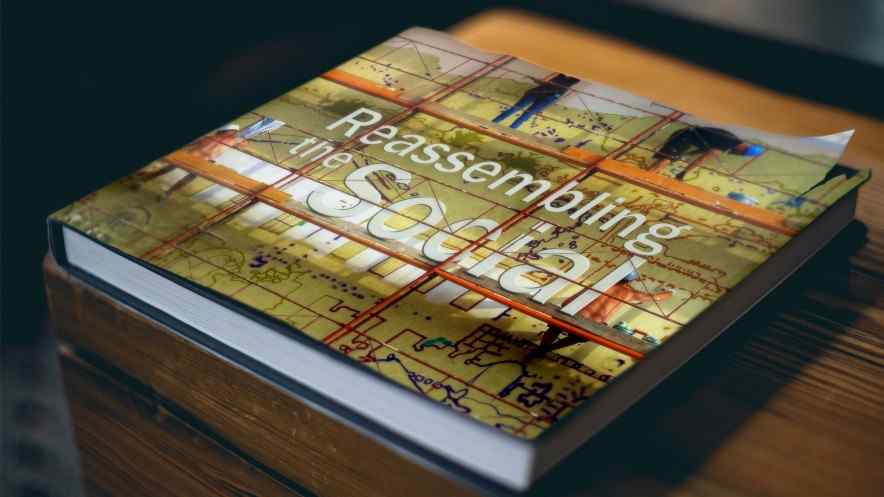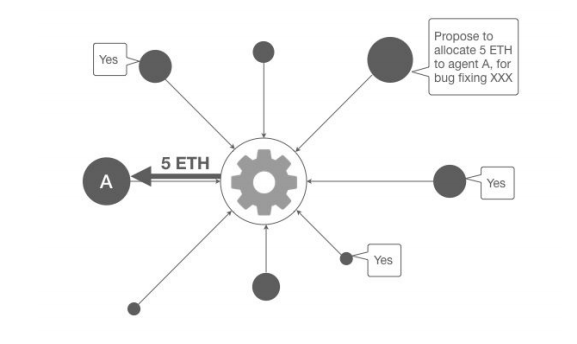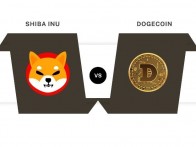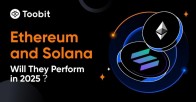
DAOstack 1: From Blockchain Governance to Decentralized Autonomous Organizations
Aug 6, 2018, 1:55PM by Martin Banov
by Martin Banov
Framing and contextualizing the importance of governance and coordination in the domain of cyberspace and the Internet of Value
Read part 2 of the DAOstack series where we answer questions about an operating system for collective intelligence, the function of the GEN token, and the need for holographic consensus.
operating system for collective intelligence? What is the function of the GEN token? And why do we need holographic consensus?
Governance refers to all decision-making processes regarding
creating, updating and abandoning formal and informal rules of a system. These rules can be code (e.g. smart contracts), laws (e.g. fees for malign actors), processes (what must be done when X happens), or responsibilities (who must do what). / Leopold Bosankic on Medium
When it comes to blockchain, governance pertains to the processes involved in network, project and fund governance. To Ethereum's Vlad Zamfir, blockchain governance is
the most important factor that will determine whether blockchains end up being a public good, or a menace to the public.
Blockchain governance, organization and scaling cooperation can dramatically affect governance outcomes and the governed resources, and are likely to have a lasting impact on many stakeholders. This poses a very broad problem, both culturally and technologically.
Before diving into the importance of decentralized and globally distributed systems in the 21st century, then, it is worth placing the problem of governance in its proper context.
Asabiyyah
Ibn Khaldun, the famous 14th century historiographer, who is considered the forerunner of the modern disciplines of sociology, economics and demography, uses the term asabiyyah (from Arabic: عصبيّة) to describe the fundamental bond of human society and the basic driving force of history.
Asabiyyah in Khaldun’s sense refers to a form of social solidarity with emphasis on group consciousness and a sense of shared purpose; the bond of cohesion among humans in a group forming a community.
Ultrasociety
Peter Turchin, one of the founders of cliodynamics ("history as science"), borrows Khaldun's term (which he considers his greatest contribution to the development of a theory of social cooperation) and uses it extensively throughout his work.
Turchin writes in "Ultrasociety: How 10,000 Years of War Made Humans the Greatest Cooperators on Earth":
The International Space Station is the wonderful fruit of something that human beings learned to do only very recently.
Of course, it involves hundreds of technologies that would have astonished even the greatest scientists of a century earlier. But the really strange thing it proves is that people can now work together on a very large scale indeed.
In the broadest sense, hundreds of millions contributed to it, including you and me. After all, a small fraction of the taxes we pay helps ensure that the ISS continues to grow and function. The ISS is the brightest, most visually striking example of large-scale international cooperation.
But there are other examples. They include CERN, the European Organization for Nuclear Research, which operates the Large Hadron Collider near Geneva. Then there is the United Nations. The greatest achievements of the UN include addressing hunger and increasing food security, aiding refugees, protecting children, promoting women’s rights, and fighting epidemics such as HIV and AIDS.
[...] Difficult things like building peaceful, wealthy, just societies cannot be done by individuals, no matter how well intentioned they are. The only way we can eliminate violence and poverty is by working together.
The only way we can eliminate violence and poverty is by working together.
In a word, the answer is cooperation […] if we want to answer a Big Question such as the one about how complex societies evolved, we need all the social sciences—sociology, anthropology, and economics—as well as the historical sciences, to work together. We need to break out from the narrow disciplinary silos. But we need to do it in a rigorous and organized way.
The Collapse of Complex Societies
Dr. Joseph Tainter, an anthropologist examining the collapse of complex societies under the lens of network theory, energy economics and complexity theory, notes that the financial crisis of 2008 (which, to a large extent, conditioned the birth of Bitcoin and gave it its historical momentum) had above all been the result of a failure to balance complexity (the structural diversification of financial products) with adequate organization such that it would channel behavior into safer avenues.
In other words, the 2008 financial crisis was a failure of organizational complexity in terms of adequate regulation in the face of proliferating financial products.
the 2008 financial crisis was a failure of organizational complexity in terms of adequate regulation in the face of proliferating financial products.
He also defines a societal collapse as the rapid loss and breakdown of an established level of complexity in society.
Actor-Network Theory
Another insightful perspective on the matter is offered by Actor-Network Theory. Developed by Bruno Latour, actor-network theory is a material-semiotic approach to explaining social phenomena which sees everything in the social and natural world as intertwined in constantly shifting networks of complex, inter-dependent relationships, where as soon as an actor joins with an actor-network it gets entangled in its web of relations, pulled into the orbits of its entelechy.
The following is an extract from Latour’s “Reassembling the Social”.

Where should we start? As always, it is best to begin in the middle of things, in medias res.
Will the reading of a newspaper do? Sure, it offers a starting point as good as any. As soon as you open it, it’s like a rain, a flood, an epidemic, an infestation. With every two lines, a trace is being left by some writer that some group is being made or unmade.
Here it’s the CEO of a big company who deplores the fact that five years after the merger the firm’s various branches are still not fully integrated. She wonders how to ‘promote a common corporate culture’.
A few lines further down finds an anthropologist explaining that there is no ‘ethnic’ difference between Hutus and Tutsis in Rwanda, but that it’s really a ‘class difference’ that has been ‘instrumentalized’ by colonialists and then ‘naturalized’ as a ‘cultural’ one.
In the letters section, a Scot reminds his readers of the ‘Glorious Alliance’ between France and Mary Queen of Scots, which explains why Scotland should not share the rabid Europhobia of Englishmen.
A correspondent from France tries to explain why second generation girls from Algeria that show up at school with an Islamic veil are seen by their teachers as ‘fanatics’ who ‘exclude themselves’ from the French Republic.
In the Europe section, it is explained that EU functionaries are more and more thinking ‘as Europeans’ and are no longer ‘loyal to their nationalities’.
In the Music section, a fierce dispute divides Baroque ensembles according to the frequency of their tuning forks, pelting one another with accusations such as ‘modernist’, ‘unfaithful to the tradition’, ‘academic’.
In the Computer section, the writer mocks the attachment of Macintosh users to their utterly marginal machines and puts forward a ‘cultural interpretation’ for what he calls a form of ‘techno-fanaticism’.
Further down an editorialist predicts that Iraq, though its borders are fairly recent, will exist as a nation and will not split up along the older dividing lines of religion and historical ‘zones of influence’. Another column mocks the accusation that those against the war in Iraq are ‘anti-American’.
It never stops. Relating to one group or another is an on-going process made up of uncertain, fragile, controversial, and ever shifting ties. Is this not odd? If we simply follow the newspapers’ cues, the central intuition of sociology should be that at any given moment actors are made to fit in a group—often in more than one.
Is this not odd? If we simply follow the newspapers’ cues, the central intuition of sociology should be that at any given moment actors are made to fit in a group—often in more than one.
And yet, when you read social theorists, it seems that the main, the crucial, the most urgent question should be which grouping is preferable to start a social enquiry. Should we take social aggregates to be made of ‘individuals’, ‘of organizations’, ‘of ‘classes’, of ‘roles’, of ‘life trajectories’, of ‘discursive fields’, of ‘selfish genes’, of ‘forms of life’, of ‘social networks’? They never seem to tire in designating one entity as real, solid, proven, or entrenched while others are criticized as being artificial, imaginary, transitional, illusory, abstract, impersonal, or meaningless.
Should we focus on the micro-level of interactions or should we consider the macro-level as more relevant? Is it better to view markets, organizations, or networks as the essential ingredients of our collective life?
From Part One: No Group, Only Group Formation.
The internet
Today, "decentralization" has become a bit of a buzzword, but we often forget that the Internet had initially been decentralized and it was mass adoption and the consequent emergence of tech giants such as Facebook which inevitably resulted in increased centralization despite best of intentions ("Don't be evil").
Google has today become less of a search engine and more of a curation engine that decides what to privilege, what is good and what is bad, motivated by things which may not always be in alignment with the interests of the user.
Google has today become less of a search engine and more of a curation engine that decides what to privilege, what is good and what is bad, motivated by things which may not always be in alignment with the interests of the user.
Marshall McLuhan, who coined the now familiar term "global village" more than half a century ago, writes in The Medium is the Message,
The suddenness of the leap from hardware to software cannot but produce a period of anarchy and collapse, especially in the developed countries.
However, with the advent of the decentralized communication infrastructure of the Internet and distributed ledger technologies ("The Internet of Value"), this digital reality has significant implications for forming new socially meaningful structures and contemporary analysts have speculated on whether the consequences of these changes could lead to some potentially new sociological structures.
DAOs, or Decentralized Autonomous Organizations, are emerging as such new possible cooperative formations on the blockchain, capable of harnessing the fibers of collective intelligence and efficiently distributing resources along vectors that produce value in alignment with the collective value system of the greater majority.
Decentralized Autonomous Organizations
Born out of a response to the financial crisis, blockchain and decentralized governance is seen as a continuation of the Internet revolution, doing for value and business what the Internet has done for media and information. It allows remarkable levels of crowd coordination by eliminating issues of fault, single points of failure and trust, consequently conditioning the technological groundwork for Decentralized Autonomous Organizations (DAOs).
A DAO is a new form of scalable, self-organizing cooperation, that is operated by smart contracts bound to the blockchain in a global run-time environment.

How a DAO operates (from the DAOstack white paper).
A DAO is essentially a form of hybrid organization which tackles a problem by coordinating a structure of cooperation enshrined in sets of smart contracts that define the fundamental rules of the organization and its mode of operation.
The autonomous nature of smart contracts mitigates the need for human managerial activity where algorithmic enforceability is applicable – thus optimizing efficiency and focus of orientation, significantly minimizing operational and coordination costs.
The DAO
A notorious example and the first such experiment was the venture capital funding DAO on Ethereum (a smart contract that will always be remembered as "The DAO") which launched in June 2016 and was hacked and drained of 50 million USD worth of Ether quickly thereafter. This resulted in a blockchain split and leaving the unforked chain as Ethereum Classic (ETC). The DAO was meant as a kind of kickstarter on the blockchain and was the largest crowdfunding ever at the time, unintentionally also becoming the biggest bug bounty ever.
Some other examples of functioning DAOs presently running on Ethereum are MakerDAO – a stability engine and volatility insurance platform running on Ethereum where MKR token holders form a decentralized network of competent professionals governing the system and managing its risk.
Closely affiliated and aligned with MakerDAO is DigixDAO, an organization that provides tokenized Proof-of-Asset gold units tied to Singapore’s jurisdictional and counterparty protections (which includes all the entities involved in the provision, audit and safety storage procedures).
A Word about DAOs ICOs
Depending on the nature of a DAO, DAOs tend to be extra cautious when carrying out an ICO as the token holders usually form the group of people that would coordinate the bootstrapping and managing of the system.
It is important, then, to have the right people in place, aligned around shared goals, values and understanding, because governance is an organic process that hinges on the active participation of involved actors who produce decisions that affect states of affairs in regards to the governed resources and resulting outcomes.
Actors and Agencies
ANT (Actor-Network Theory) scholars localize agency neither in human “subjects” nor in non-human “objects” (i.e., technology), but in the heterogeneous associations between them - a multiplicity of different realities and "worlds" exists, one for each actor's sources of agency (that is, his motivations and inspirations for action).
An agency thus becomes the product of translating back and forth for a hybrid collective which itself constitutes an array of relations, links and processes. The collective includes all that inspires, influences and touches it and all of the actors within this network are equal in performing their designated roles. The sense of an organism — an autonomous entity, becomes an emergent phenomena apparent only at the collective level of the assemblage.
Machines, or technology, on the other hand, are very good allies (political and otherwise) as their immutability and inertia (i.e., lack of opposition to them) makes them very efficient in keeping other allies in place, making the dominating actors look stable and solidifying a set of arrangements and relationships.

The building blocks of DAOs are defined as smart agencies, an agency being the atomic unit of governance managed and operated by smart contracts (over which agents interact). It has its own token related to the benefits of the company's resources and associated network effects, its own reputation systems (related to the credibility and influence in the matters at hand) and its own governance system of laws encoded in its smart contracts.
The aggregation of all of the actions taking place within the specified boundaries of the DAO, feedbacks of those actions and the resulting multiplicity of reputations of these entangled webs of interaction form the agency of a DAO.
The DAOstack articles is a unique 3-part series exploring the theoretical, technical and social roots of DAOs, specifically the DAOstack project. In part 2 we dive into the DAOstack project, asking what is the DAOstack (spoiler: it has a lot to do with an operative system for collective intelligence), what is the GEN token, and what is a holographic consensus.
Disclaimer: information contained herein is provided without considering your personal circumstances, therefore should not be construed as financial advice, investment recommendation or an offer of, or solicitation for, any transactions in cryptocurrencies.

















